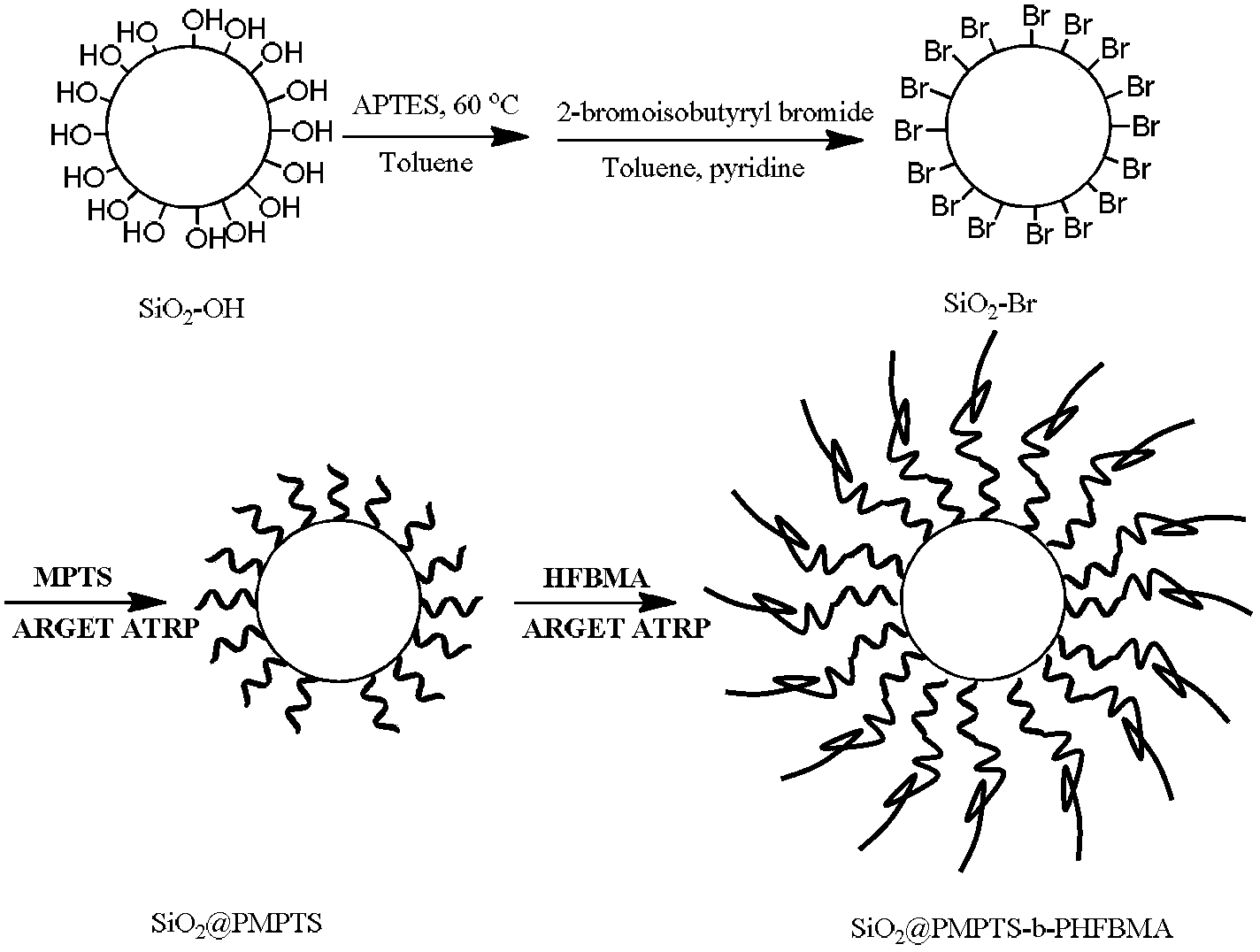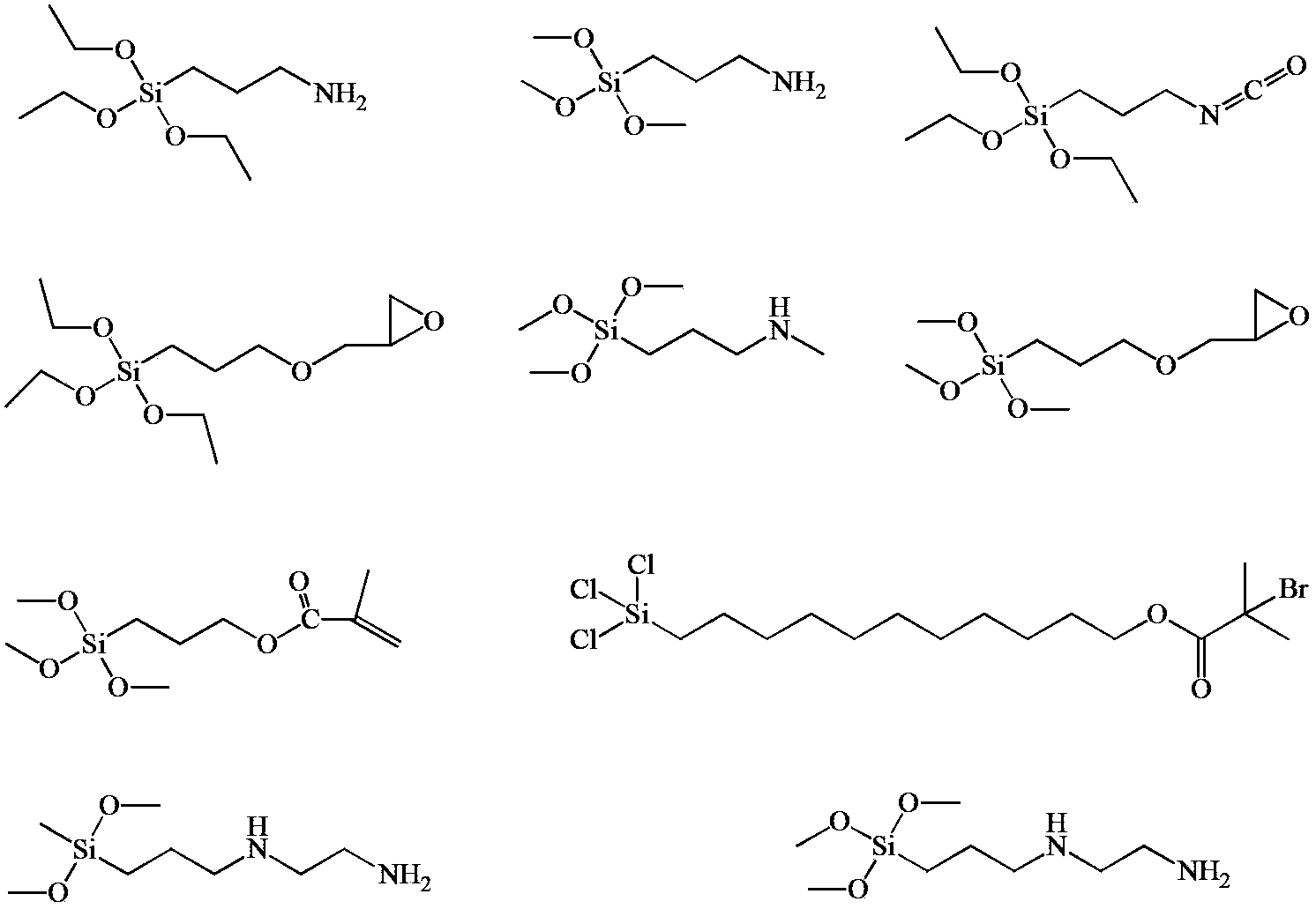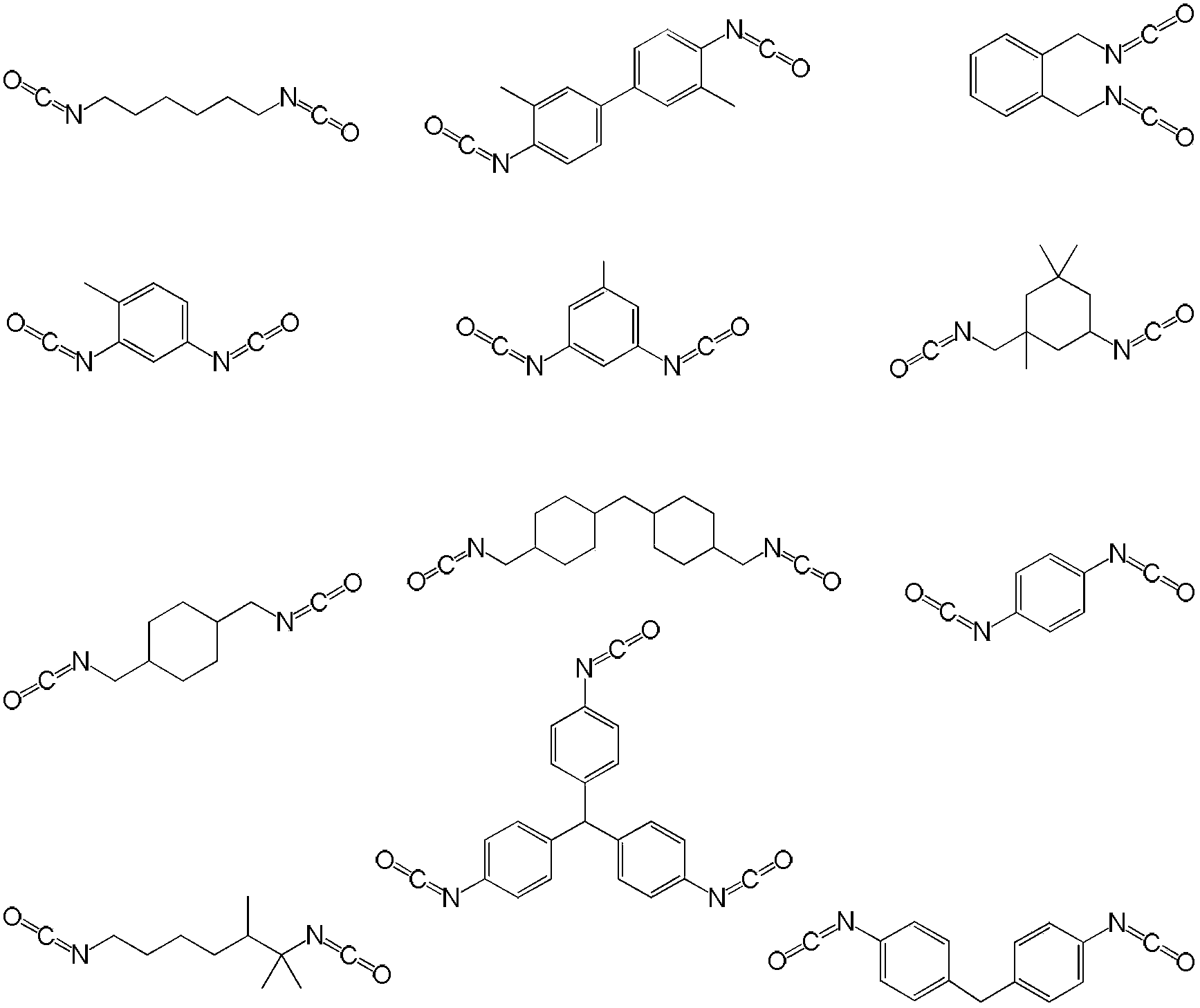Fluorine-silicon segmented copolymer modified inorganic material and preparation method thereof
A technology of copolymer modification and inorganic materials, which is applied in the field of technical materials to achieve the effects of reducing dead polymerization, mild reaction conditions and reducing costs
- Summary
- Abstract
- Description
- Claims
- Application Information
AI Technical Summary
Problems solved by technology
Method used
Image
Examples
Embodiment 1
[0040] Step 1: Preparation of Silane Coupling Agent Modified Silica
[0041] Add 1 mol of silica, 5 mol of silane coupling agent and 100 mol of toluene into the container, reflux for 1 hour, centrifuge to separate silica, and wash with toluene several times to obtain silica modified by silane coupling agent;
[0042] Step 2: Preparation of silica with initiator on its surface
[0043] Add 1 mol of silane coupling agent modified silica on the surface and 1.1 mol of pyridine to 1 mol of toluene and stir at low temperature, then slowly drop 1.1 mol of 2-bromoisobutyryl bromide diluted with 1 mol of toluene. After 1 hour, return the system to room temperature, continue to stir for 1 hour, centrifuge, and wash with a solvent several times, and dry to obtain silica with initiator sites on the surface; the solvent is tetrahydrofuran, dichloromethane, tris Any one of methyl chloride, benzene, toluene, and xylene inert solvents;
[0044] Step 3: Preparation of poly-3-methacryloxyprop...
Embodiment 2
[0049] Step 1: Preparation of Silane Coupling Agent Modified Silica
[0050] Add 1 mol of silica, 10 mol of silane coupling agent and 500 mol of toluene into the container, reflux for 24 hours, centrifuge to separate silica, and wash with toluene several times to obtain silica modified by silane coupling agent;
[0051] Step 2: Preparation of silica with initiator sites on the surface
[0052] Add 1 mol of silane coupling agent on the surface of modified silica and 10 mol of pyridine to 100 mol of toluene and stir at low temperature, then slowly drop 10 mol of 2-bromoisobutyryl bromide diluted with 100 mol of toluene. After 3 hours, the system was returned to room temperature, continued to stir for 24 hours, centrifuged, and washed with a solvent for several times, and dried to obtain silica with initiator sites on the surface; the solvents were tetrahydrofuran, dichloromethane, tris Any one of methyl chloride, benzene, toluene, and xylene inert solvents;
[0053] Step 3: Pr...
Embodiment 3
[0058] Step 1: Preparation of Silane Coupling Agent Modified Silica
[0059] Add 1 mol of silica, 8 mol of silane coupling agent and 300 mol of toluene into the container, reflux for 12 hours, centrifuge to separate the silica, and wash with toluene several times to obtain silica modified by silane coupling agent;
[0060] Step 2: Preparation of silica with initiator sites on the surface
[0061] Add 1 mol of silane coupling agent modified silica on the surface and 1.1 mol of pyridine to 1 mol of toluene and stir at low temperature, then slowly drop 1.1 mol of 2-bromoisobutyryl bromide diluted with 1 mol of toluene. After 1 hour, return the system to room temperature, continue to stir for 1 hour, centrifuge, and wash with a solvent several times, and dry to obtain silica with initiator sites on the surface; the solvent is tetrahydrofuran, dichloromethane, tris Any one of methyl chloride, benzene, toluene, and xylene inert solvents;
[0062] Step 3: Preparation of poly-3-meth...
PUM
 Login to View More
Login to View More Abstract
Description
Claims
Application Information
 Login to View More
Login to View More - R&D
- Intellectual Property
- Life Sciences
- Materials
- Tech Scout
- Unparalleled Data Quality
- Higher Quality Content
- 60% Fewer Hallucinations
Browse by: Latest US Patents, China's latest patents, Technical Efficacy Thesaurus, Application Domain, Technology Topic, Popular Technical Reports.
© 2025 PatSnap. All rights reserved.Legal|Privacy policy|Modern Slavery Act Transparency Statement|Sitemap|About US| Contact US: help@patsnap.com



